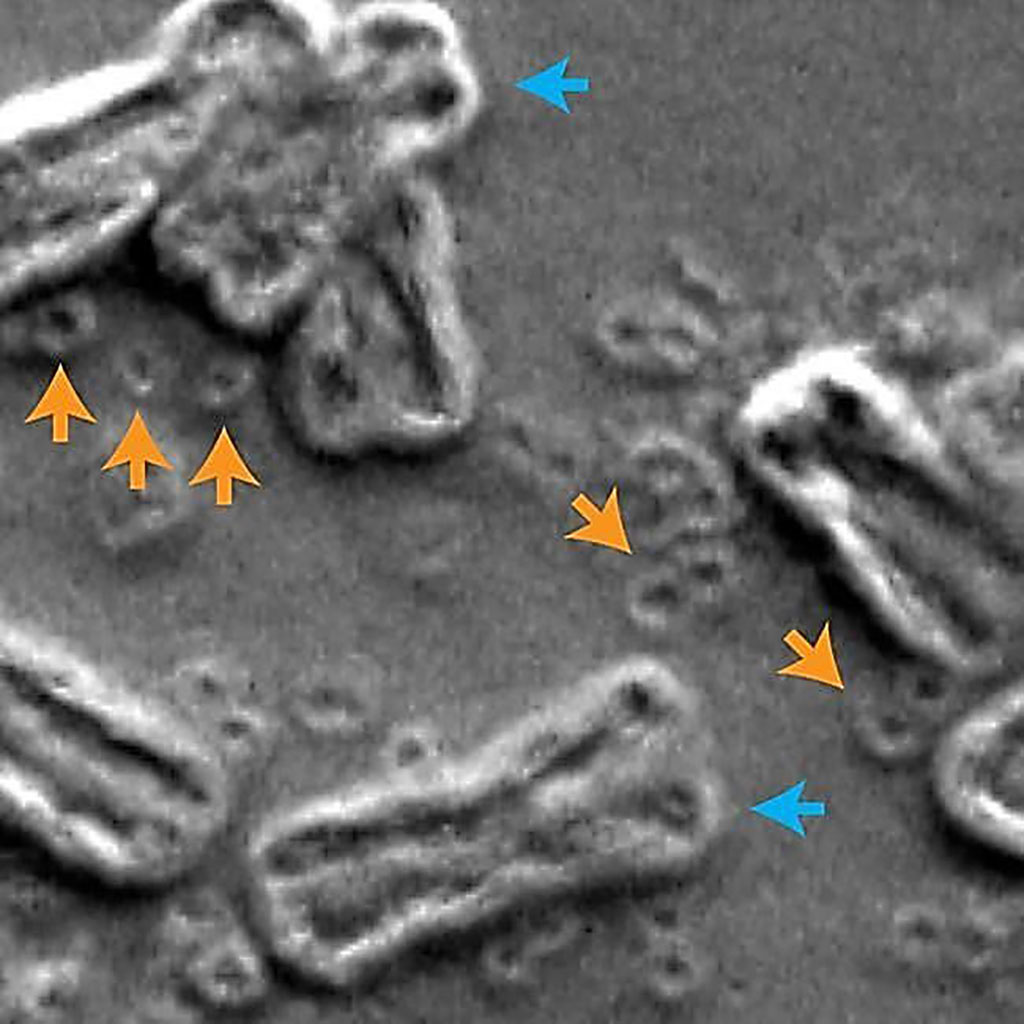Pan-Cancer Study Reveals Extrachromosomal DNA Frequency
By LabMedica International staff writers
Posted on 01 Sep 2020
Extrachromosomal circular DNA (eccDNA) are circular DNA found in human, plant and animal cells in addition to chromosomal DNA. eccDNA originate from chromosomal DNA and can be from 50 base pairs to several mega-base pairs in length and encode regulatory elements and several full genes.Posted on 01 Sep 2020
Extrachromosomal DNA (ecDNA) amplification promotes intratumoral genetic heterogeneity and accelerated tumor evolution; however, its frequency and clinical impact are unclear. The circular shape of ecDNA differs from the linear structure of chromosomal DNA in meaningful ways that influence cancer pathogenesis.

Image: Scanning electron micrograph of inside the nucleus of a cancer cell, chromosomes are indicated by blue arrows and circular extrachromosomal DNA are indicated by orange arrows (Photo courtesy of Paul S. Mischel, MD, UC San Diego).
Scientists from the Jackson Laboratory for Genomic Medicine (Farmington, CT, USA) and their colleagues at the University of California at San Diego (San Diego, CA, USA) used computational analysis of whole-genome sequencing, RNA sequencing, or ATAC-seq data from 3,212 cancer patients and showed that ecDNA amplification frequently occurs in most cancer types but not in blood or normal tissue. Such amplifications were missing from normal tissue samples, but they did turn up across cancer types in all but the blood cancers considered, that is often carrying oncogenes along with them.
Notably, the team saw signs that the presence of ecDNA in a tumor generally corresponded with poorer patient outcomes compared with non-ecDNA tumors from the same cancer types, pointing to a potential role for ecDNA in tumor aggressiveness or the possibility of using the rogue DNA prognostically. Bringing in additional RNA-seq and ATAC-seq data provided the investigators with a chance to look at the impact of some ecDNAs and the oncogenes they carry in cancer, while five-year survival data for patients with or without circular amplicons in their tumors revealed the potential differences in outcomes coinciding with the ecDNAs.
The authors concluded that their results demonstrated that ecDNA-based oncogene amplification is common in cancer, is different from chromosomal amplification and drives poor outcome for patients across many cancer types. The potential to leverage the presence of ecDNAs in human cancers for diagnostic or therapeutic purposes provides a link between cancer genomics and broad utility for patient populations. The study was published on August 17, 2020 in the journal Nature Genetics.
Related Links:
Jackson Laboratory for Genomic Medicine
University of California at San Diego














